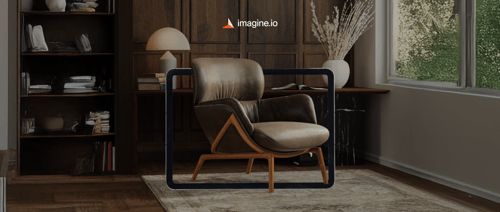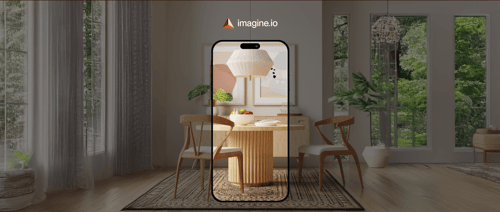Picture a shopper in a Dallas showroom, rotating a 3D model of a KitchenAid mixer on a digital display, its sleek design catching the light just right. Across the continent in Toronto, the same mixer stars in a vibrant Instagram ad, its colors and contours perfectly aligned with the showroom version. This isn't a coincidence it's the power of 3D content pipelines, a game-changer for global appliance brands striving for visual consistency across markets. In an era where omnichannel retail demands flawless branding, from Los Angeles to Canada, these pipelines are redefining how companies like Kohler and Maytag deliver cohesive, high-quality visuals at scale.
Why Visual Consistency Defines Global Success
For appliance brands operating in diverse markets like Chicago, Las Vegas, and beyond, visual consistency is more than aesthetics it's a cornerstone of brand trust. A refrigerator on a website must match the one in a High Point retailer's catalog, or customers lose confidence. Disparate visuals, like a faucet with mismatched lighting on Amazon versus a brand's site, can fracture a brand's identity. 3D content pipelines address this by enabling brands to produce unified assets that shine across platforms, from LinkedIn to direct-to-consumer sites. These pipelines streamline collaboration between creative, production, and marketing teams, ensuring every visual tells the same story, whether in Austin or New York.
The urgency for such solutions is clear. The 3D digital asset market, valued at USD 29.31 billion in 2024, is expected to reach USD 97.61 billion by 2034, growing at a 12.8% CAGR from 2025 to 2034. These assets digital 3D representations of objects crafted with specialized modeling software are vital for industries like appliances, where precise visuals drive engagement in e-commerce, virtual reality, and beyond.
From Studio Shoots to Scalable 3D Pipelines
Traditional photoshoots, once the gold standard, are buckling under the weight of global demands. Coordinating studio sessions across regions, managing lighting variations, and updating assets for new product lines eat up time and budgets. A single reshoot for a market like Canada can cost thousands and delay campaigns. 3D content pipelines, however, offer a smarter path forward, delivering speed, scalability, and quality that legacy methods can't match.
Photorealism That Rivals Reality
Imagine visuals so lifelike that even e-commerce experts can't spot the difference between a 3D render and a studio shot. That's the reality with platforms like imagine.io, which has proven through studies that its assets match the quality of live photoshoots. Whether it's a Kichler chandelier or a Hunter fan, these photorealistic renders ensure every detail from texture to sheen looks flawless across platforms like YouTube or brand websites.
Meeting Omnichannel Demands
Today's consumers shop everywhere: Amazon, brand sites, even Facebook ads. Each platform demands tailored content, from high-res images to interactive 360-degree views. 3D pipelines deliver assets that adapt seamlessly, ensuring a Serta Simmons mattress looks identical in a Chicago retailer's listing and a Las Vegas trade show video. This consistency strengthens brand recognition and simplifies the shopping experience across global markets.
Speed and Scale for Complex Catalogs
For brands with sprawling product lines, like Amana or Sinomax, speed is critical. 3D pipelines allow companies to upload a model to a cloud-based platform and generate unlimited assets images, videos, configurators in minutes. This scalability is a lifeline for managing high-volume catalogs, enabling brands to roll out visuals for new products across regions like Dallas or Canada without breaking a sweat.
Real-World Wins for Appliance Giants
The impact of 3D pipelines is already reshaping how appliance brands operate. From aligning global campaigns to slashing production costs, these tools are proving indispensable.
Unified Campaigns Across Markets
Take KitchenAid, a brand beloved across North America. Ensuring its stand mixers look identical in a New York showroom and a Canadian e-commerce site, despite regional display differences, is a logistical challenge. 3D pipelines solve this by creating a single set of assets that can be fine-tuned for local markets without sacrificing brand integrity. The result is a cohesive visual story that resonates from Los Angeles to Toronto.
Marketplace-Ready Visuals
E-commerce platforms like Amazon and Wayfair have strict content guidelines, while direct-to-consumer sites demand flexibility. Brands like Maytag and Kohler use 3D pipelines to produce visuals that meet these diverse standards. A refrigerator's interactive spin on a brand's site can be repurposed for a marketplace listing, saving time and ensuring uniformity across channels.
Eliminating Costly Reshoots
Reshoots are a nightmare for global brands. A product update, like a new color for a Whirlpool appliance, could require fresh photography in multiple regions. With 3D pipelines, brands can update assets in the cloud, tweaking features or colors instantly. This agility saves thousands and keeps product launches on track, whether in High Point or Las Vegas.
Overcoming Barriers to Adoption
Despite their advantages, 3D pipelines face pushback from brands rooted in traditional workflows. Addressing these concerns is critical to widespread adoption.
Subscription vs. One-Off Costs
Some brands balk at ongoing subscriptions, favoring project-based pricing. Yet the long-term value of 3D pipelines unlimited asset creation, rapid updates, and reduced studio costs far outweighs upfront expenses. Educating brands about this ROI is essential to shifting mindsets.
Navigating Pricing Complexity
Unlike competitors with standardized pricing, imagine.io's custom plans can feel complex. However, this tailored approach ensures brands get precisely what they need, from high-volume image generation to advanced configurators. Clear communication about this flexibility can turn hesitation into enthusiasm.
Integrating with Existing Workflows
Brands with established agency pools may resist new platforms. Integrating 3D pipelines with existing creative processes requires careful planning, but the payoff streamlined workflows and consistent visuals makes it a worthwhile investment for companies like Diageo or PepsiCo.
Seizing Opportunities in a Visual-First World
As e-commerce and omnichannel retail surge, 3D content pipelines offer appliance brands a competitive edge. The time to invest is now.
Building Trust Through Consistency
A unified visual identity fosters trust, whether a customer is browsing a Ruggable rug in Chicago or a Kohler faucet on Instagram. 3D pipelines ensure every asset, from a KegWorks bar tool to a King Koil mattress, aligns with the brand's vision, no matter the market.
Accelerating Product Launches
In a fast-paced industry, speed is everything. 3D pipelines enable brands like Sinomax to generate assets instantly, cutting weeks off launch timelines. For new products hitting markets from Austin to Canada, this agility translates to market share.
Scalable Content for Omnichannel Success
From LinkedIn campaigns to YouTube tutorials, brands need visuals that adapt to every platform. 3D pipelines deliver scalable content that meets the needs of retail partners, marketplaces, and social media, all while maintaining a cohesive brand image.
The Future of Global Brand Visualization
The appliance industry stands at a crossroads. As AI and automation advance, 3D content pipelines will evolve into integrated platforms that combine visualization, configuration, and analytics. For brands like KitchenAid, Kohler, and beyond, these tools are no longer optional they're a strategic imperative. In a world where every pixel shapes perception, 3D pipelines empower brands to deliver consistent, compelling visuals that captivate customers, from Dallas to the digital realm. The future is clear, and it's rendered in stunning 3D.
Frequently Asked Questions
What are 3D content pipelines and how do they help appliance brands maintain visual consistency?
3D content pipelines are cloud-based systems that allow appliance brands to create unified visual assets from a single 3D model, ensuring products look identical across all platforms and markets. These pipelines enable brands like KitchenAid and Kohler to generate unlimited images, videos, and interactive content that maintains consistent lighting, colors, and details whether displayed on Amazon, brand websites, or in retail showrooms from Dallas to Toronto. This eliminates the visual inconsistencies that can damage brand trust when customers see different representations of the same product across channels.
How do 3D content pipelines compare to traditional product photography for appliance marketing?
3D content pipelines offer significant advantages over traditional photoshoots by providing faster turnaround times, unlimited asset generation, and instant updates without costly reshoots. While traditional photography requires coordinating studio sessions across multiple regions and can cost thousands for a single reshoot, 3D pipelines allow brands to upload one model and generate photorealistic visuals in minutes. Studies show that platforms like imagine.io produce renders so lifelike that they're indistinguishable from studio photography, while offering the flexibility to instantly update colors, features, or configurations for different markets.
What ROI benefits can appliance brands expect from implementing 3D content pipelines?
Appliance brands can expect substantial cost savings and efficiency gains from 3D content pipelines, particularly in eliminating expensive reshoots and accelerating product launches. The technology allows brands to cut weeks off launch timelines by generating marketplace-ready visuals instantly, while reducing the thousands of dollars typically spent on regional photography sessions. With the 3D digital asset market growing at 12.8% CAGR and expected to reach $97.61 billion by 2034, early adoption of these pipelines provides a competitive advantage in omnichannel retail, where consistent visuals across platforms drive customer trust and engagement.
Disclaimer: The above helpful resources content contains personal opinions and experiences. The information provided is for general knowledge and does not constitute professional advice.
You may also be interested in: Imagine.io | Award Winning 3D + AI Product Visualization
Struggling with expensive, outdated product visuals that slow down your creative process and stunt eCommerce growth? imagine.io's AI-powered platform empowers furniture, home décor, and textile brands to effortlessly produce striking 3D images, immersive videos, AR experiences, and interactive configurators. Cut production costs up to 70%, boost conversions 5X, speed up prototyping, and supercharge your online sales. Ready to elevate your product visuals and captivate customers? Book a demo with imagine.io today!
Powered by flareAI.co




.png?width=500&name=How%20to%20Add%20a%203D%20Product%20Configurator%20to%20Your%20WordPress%20Website%20(Complete%20B2B%20Guide).png)
















%20(1).png?width=500&name=Why%20Exploded%20Mattress%20Views%20Matter%20(And%20How%20to%20Generate%20Them)%20(1).png)
.png?width=500&name=Best%20Shopify%20Product%20Configurator_%20How%20to%20Choose%20the%20Right%20One%20(2).png)
.png?width=500&name=Why%20Exploded%20Mattress%20Views%20Matter%20(And%20How%20to%20Generate%20Them).png)



.png?width=500&name=Best%20Shopify%20Product%20Configurator_%20How%20to%20Choose%20the%20Right%20One%20(1).png)







.png?width=500&name=How%203D%20Rendering%20Can%20Make%20or%20Break%20Your%20Industrial%20Design%20Pitch%20(1).png)








%20with%20Digital%20Twins%20and%203D%20Visualization.png?width=500&name=Optimizing%20Your%20Digital%20Asset%20Management%20(DAM)%20with%20Digital%20Twins%20and%203D%20Visualization.png)




.png?width=500&name=Styling%20Home%20Decor%20for%202025_%20From%20Global%20Influences%20to%20Playful%20Personalization%20(1).png)
